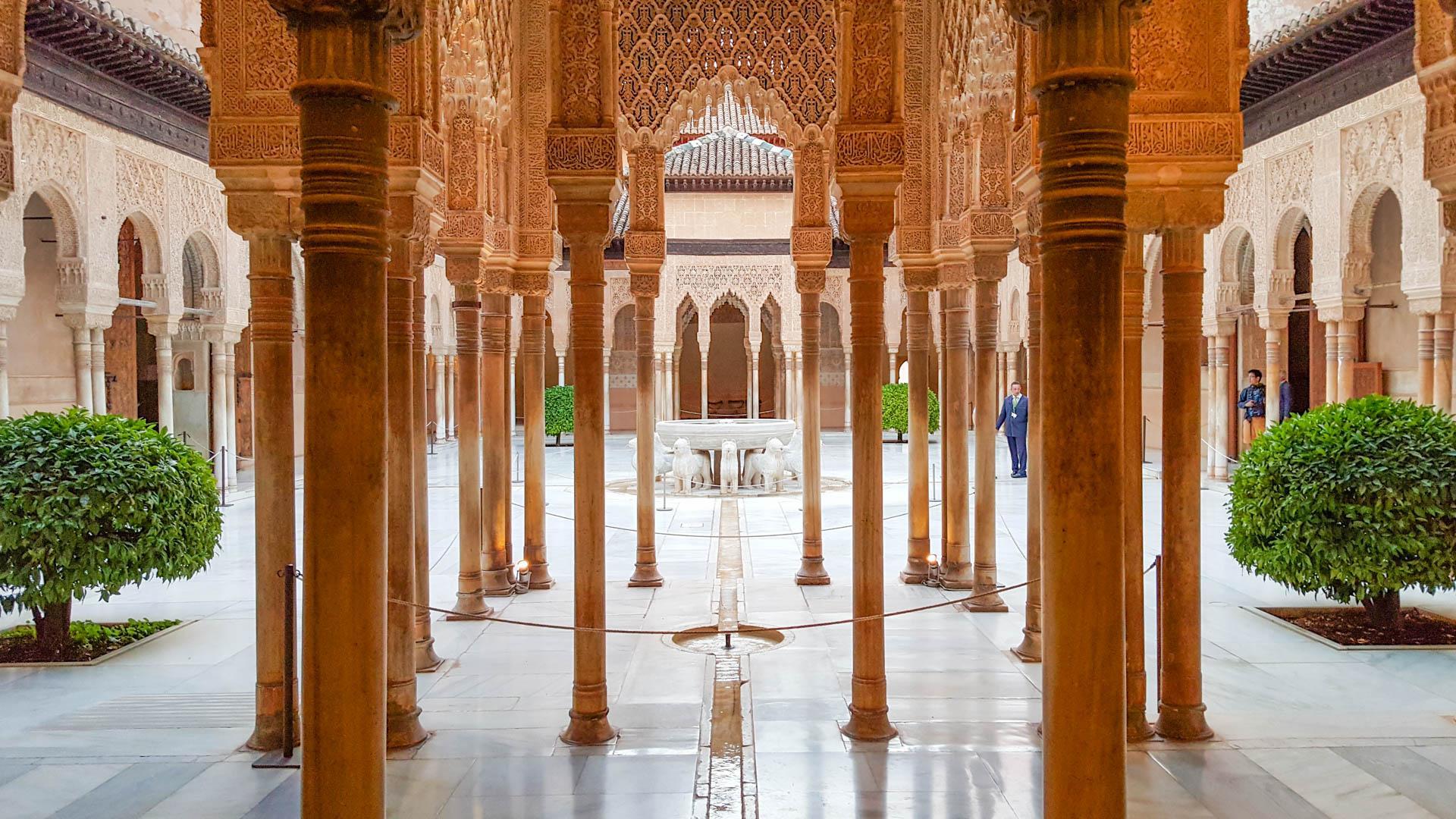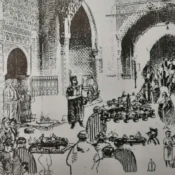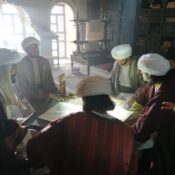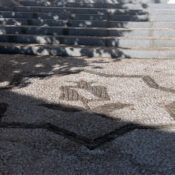Geometry in Alhambra tiles
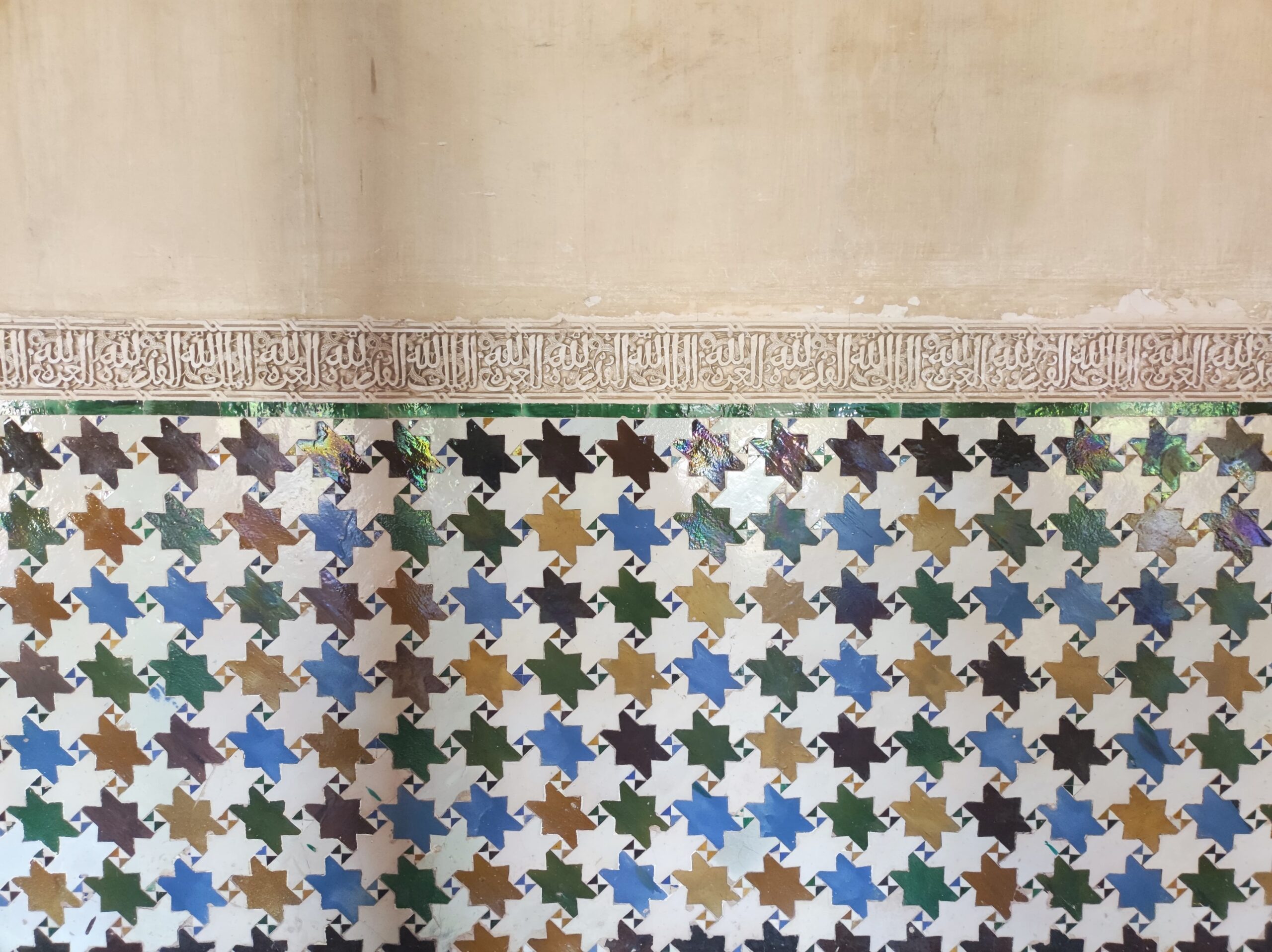
Geometry in Alhambra tiles
Alhambra is, without a doubt, one of the most visited monuments in Spain; during a tour, it's impossible to fully understand the monument's complexity. That's why, today, we want to focus on the tiling. Specifically, on the geometric work contained in its designs.
In the 19th century, a Russian crystallographer named E.S Fedorov demonstrated that the plane can only be tessellated in 17 different ways, that is, covered or paved with figures that generate a pattern and create a homogeneous surface with a regularity that leaves no gaps or overlaps between the figures.
Well, here comes the surprise: these 17 groups had already been represented in the Alhambra, between the 13th and 15th centuries. The Nasrid artisans, as we see, possessed a very advanced knowledge of geometry and mathematics. They divided the compositions into simple (based on the repetition of one or two figures) and complex (various motifs moved and rotated to generate new geometric shapes), and it was decided to do one or the other depending on the space and the site they were going to occupy.
Within these compositions, there are different types of turns that can be made to achieve these designs, and among the Nasrids, the most popular was the 90 degree form.
Os dejamos una breve clasificación, extraída del Patronato de la Alhambra:
• Symmetry groups without rotations: There are 4 groups (specifically, according to the International Abbreviated System of Nomenclature: P1, cm, pg, and pm).
• Symmetry groups with 180-degree rotations: There are 5 types of symmetry (P2, cmm, pmm, pmg, pgg).
• Symmetry groups with 120-degree rotations: With 3 symmetry groups (P3, P31m, P3m1).
• Symmetry groups with 90-degree rotations: With 3 groups (P4, P4m, P4g).
• Symmetry groups with 60-degree rotations: With 2 groups (P6, P6m).
Not only does the Alhambra significantly predate Fedorov, but it's also the only monument in the world where these crystallographic groups have been found. They were so influential that they even inspired the famous drawings of M.C. Escher and the architectural designs of Gaudí.
All categories
- Arquitectura islámica
- Arte y decoración en la Alhambra
- Visitors Tips
- Cultura andalusí
- Granadian Sayings
- Folklore
- Granadian Cuisine
- Granada
- Granadian Province
- Alhambra History
- Distinguished Granadians
- Useful information
- Granadian Literature
- Granadian Literature
- Magic, legends and mystery
- Granadian Miscellany
- Granadian Nostalgia
- Granadian Traditions
- Granadian Traditions
- Guided tours
Latest posts
